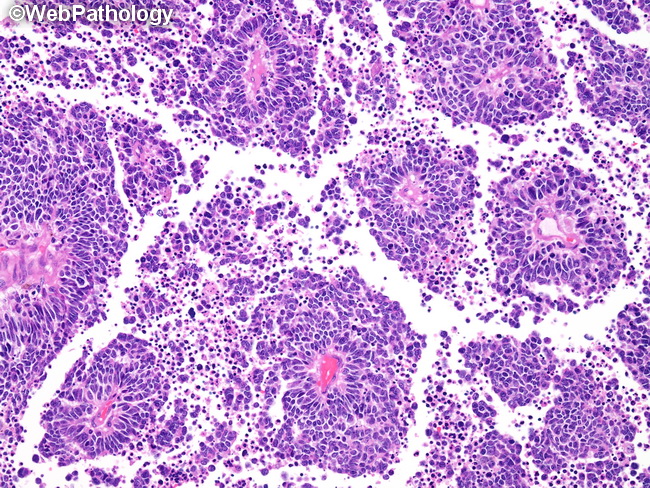Small Cell Carcinoma : Molecular Genetics


Comments:
Small cell carcinoma and large cell neuroendocrine carcinoma are strongly linked with cigarette smoking and are rarely seen in non-smokers. There is no known precursor lesion. They are driven by inactivating mutations in TP53 (100% of cases) and RB genes (100% of cases) and have no association with MEN I syndrome. They carry the characteristic tobacco-smoking related carcinogenic signature – large number of mutations and high fraction of G to T transversions in methylated CpG dinucleotides – caused by polycyclic aromatic hydrocarbons in tobacco smoke. TP53 inactivation is an early event in carcinogenesis and it causes genomic instability leading to chromosomal deletions at multiple sites, including 3p, 4q, 5q, 13q, and 15q. The 3p location contains several tumor suppressor genes which are lost, including FHIT, RASSF1, FUS1, VHL, DUTT1, and FRA3B. In addition, a small percentage of small cell carcinoma cases show FGFR1 amplification, PTEN mutations, or SOX2 amplification. The image shows small cell carcinoma of lung with tumor cells around blood vessels forming perivascular pseudorosettes. Necrosis of the intervening areas has created a papillary appearance.



